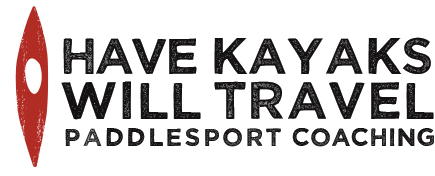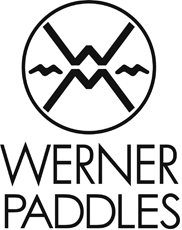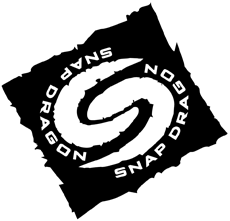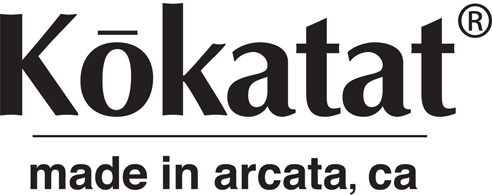Gear that works: A review of our kayaking kit
Our recent a trip to Wales gave us the opportunity to review our kit and see if there was anything lacking. Here’s what we found: When a paddling trip requires an airline flight, luggage becomes a serious concern. In the past, we’ve mostly used cordura duffel bags, which have significant down sides: they tend to wear fairly quickly, their zippers break under pressure, and they’re not easy to carry when fully loaded. So for this trip, we invested in North Face Base Camp duffel bags. The heavy, water- and abrasion-resistant laminated ballistic nylon is tough enough to survive the ravages of the cargo hold; the zippers are robust; the padded shoulder straps and hand straps and comfortable; and the “D” shaped opening makes it easy to access the gear inside. We purchased a large one (4 pounds, 90 liters) and an extra large one (5 pounds, 155 liters). We filled both and were glad to have them, though it was easy to go over the 50-pound baggage limit with the extra large. We have struggled to pack our two-piece paddles on previous flights; they don’t fit in our luggage, and the cost of packing them separately is prohibitive. This time, we got four-piece Werner paddles, which fit nicely in our new bags, protected by our PFDs and other gear. We did wonder whether they would be as stiff and durable on the water, and whether the extra buttons at the end of the shaft sections would allow them to come apart unintentionally. But we found they performed just as well as our normal Werner two-piece paddles. The joints between the blades and the shaft are very tight (more tight than the central one) and would be hard to separate accidentally. In fact, our friend Pat wisely recommended that we disassemble and rinse them immediately after getting off the water so the salt wouldn’t turn them into two-piece paddles. (For construction reasons, four-piece paddles are not available in a bent shaft and are a custom order.) We continued our quest for the perfect paddling shoe. We generally prefer a lower-profile shoe, but for this trip we wanted something that would provide grip on rocks and barnacles, and give us good support while we carried our boats on cobble beaches and other uneven surfaces. Alec brought along his Sperry Ricochet Bungee sneakers, which provide great grip and drainage and have a pretty nifty, snag-free lacing system. Sharon brought her Keen Gorge boots, which are fantastic for comfort, support and quality. Sadly, Keen stopped manufacturing them in 2012, but some are still available in shops and online. (Alec actually managed to purchase a pair during our trip at Summit to Sea in Holyhead.) What do we like...
Photo Friday: Far from home
Reflections on seven days of paddling in Wales, part two
By day four, we were well prepared to paddle some of the major features of Holyhead. The plan was to start paddling at Porth Dafarch, play at Penrhwyn Mawr, South Stack and North Stack, and end the day at Soldier Point. But it turned out to be a day of saying “no.” The first “no” came on the beach at Porth Dafarch, where we and a group of BCU five-star trainees watched the waves spilling onto the beach and occasionally crashing on the rocks. While we probably could have gotten out OK, the consequences of getting worked in the surf were too great; we and they chose to reverse our route, starting at Soldier Point instead. We were able to work our way out to North Stack, observing and playing with the tidal stream and enjoying the impressive cliffs and sea caves. From there we paddled along the rocks down to South Stack and its prominent lighthouse. The second “no” came when we reached South Stack, where the tidal race was massive and the alternative of paddling between the stack and the mainland cliffs was also out, due to current and swell pouring through. We had to turn around. But this was far from a day of disappointment. Those decisions, which were also made by the group doing a five-star training, reflected good risk assessment–one of the key skills we had come here to work on. On day five, we took on a classic five-star training challenge: navigating out to the Skerries, a small cluster of islands a couple miles off of Carmel Head. Like our coastal journey from Point Lynas, this is not a long trip, but it is a complicated one. The tides are complex, and it’s easy to miscalculate or fall off course and miss the islands entirely. Each of us had planned a course and ferry angle using tidal vectors, but Phil had us scrap those plans. Instead, we took turns leading our group, navigating buoy to buoy and using tidal information and ranges to stay on track as we rode the flood tide. Until we reached the Skerries, we had to trust our ranges more than our intuition; we often felt the urge to change course based on visual references. At the Skerries, we ate lunch and shared birthday cake with the five-star trainee group beneath the 18th Century lighthouse. Then we returned using a slightly different route on the ebbing tide, stopping at some play spots along the way. On day six, we completed the journey we had aborted on day three. We set out from Porth Dafarch, passed Penrhwyn Mawn toward the end of the ebb, rock hopped our way up to South Stack, then returned...
Reflections on seven days of paddling in Wales, part one
We had grand intentions of posting every day while we were in Wales, but between spending most of each day on the water and most of each evening preparing for the next day, we consistently ran out of time. So over the next several days, we’ll try to catch up on a host of posts we weren’t able to create then. First, why Wales? We chose to go to Anglesey (in northwestern Wales) because it’s one of the world’s great sea kayaking destinations. It’s the location of the Penrhwyn Mawr, South and North Stack tidal races, and the strong currents under the Menai Straits, which Justine Curgenven introduced to a wide audience in This is the Sea 2. It’s also home to many great high-level kayak coaches, including Phil Clegg, Peter Jones, Nick Cunliffe and Nigel Dennis, as well as the kayak manufacturers Sea Kayaking UK (formerly NDK) and Rockpool. And it’s a spectacular place of steep cliffs, craggy shorelines, strong tidal streams, and a thriving sea kayaking community. We arranged to spend seven days working with Phil Clegg, BCU Level 5 Coach and owner of Sea Kayaking Anglesey. We asked him for a combination of things: tips on better reading the water in a tidal environment; opportunities to paddle some of the famous places and features of that area; reflections on coaching to aid us in our own progress as instructors; better insight into the four-star remit in the water it was created for (without being restricted to that remit); and the opportunity to complete our BCU four-star assessment, if conditions allowed. Here, in brief, is what we got. Our first day was windy, with powerful, long-period swell, so we spent time getting warmed up by paddling in the wind and surf and off Trearddur Bay. This was an opportunity for us to get a feel for the equipment we were using as well as get comfortable paddling open water again after a long winter of indoor paddling. It also gave Phil a chance to assess our skills. We’ve paddled ocean surf before, on both the east and west coasts of North America, but we were reminded again about the sheer power of open ocean waves. We worked on techniques and tactics for paddling in wind, leading around rocks with swell, performing rescues in the conditions and, of course, did some surfing. We spent the second day in the Menai Strait, which separates the Isle of Anglesey from the rest of Wales, to take refuge from another day of high winds. We paddled against the tide in both directions, exploring currents and surfing on standing waves (including the Swellies). Water flows into and out of both sides of the Strait, making this a fascinating place for...
Visiting Valley, birthplace of my boat
“Made in Nottingham.” Every time I get in my boat, I see that simple statement and think about the “other” British invasion: contemporary fiberglass sea kayaks. Our first sea kayaks were a Valley Avocet and a P&H Vela; today we paddle an SKUK Pilgrim and a Valley Avocet LV — smaller boats that didn’t exist when we began paddling ten years ago. In a world of mass-production, sea kayaks are still hand made, one at a time, in small shops by skilled workers. So although Nottingham is a bit off the path from Chicago to Wales, we had to stop by and see where my boat was made. Valley was launched by Frank Goodman in 1970. Back then, Valley was a single-building operation, where first the Anas Acuta and then the Nordkapp were produced (both contemporary versions of traditional Inuit boats). One of the young men he hired to work in the shop was Jason Buxton, who had begun kayaking as a kid. Buxton, who went on to do whitewater and sea trips and to become a member of the British freestyle kayaking team, worked at Valley for about 10 years before moving to Pyranha. Nine years ago, Goodman retired and sold Valley to Buxton and Peter Orton, also a member of the freestyle team, a slalom racer and a fan of all things fast, who was designing boats for P&H. Today, Valley is comprised of three main buildings, where the fiberglass and carbon/kevlar boats are made, the polyethylene boats are finished (they are made off-site), designs are refined, and completed boats are wrapped to await shipping. Valley’s 20 full-time employees produce as many as 175 boats per week in the summer–the busiest season–including the North Shore line of sea kayaks Valley bought and updated, and the Big Dog line of whitewater boats it launched in 2009 “under cover of darkness.” That story exemplifies the close-knit and competitive nature of British sea kayak manufacturing. Not only have most of the people involved worked with or for one another over the years; they’re also fiercely protective of their innovations. Buxton, Orton and Andy Whiting intended to surprise everyone with the launch of their new line of whitewater boats. But they had to test paddle the boats and refine the designs before the launch. So they took their evolving designs out only before dawn and after dark, hoping to avoid being seen by other paddlers in the business; when they did occasionally spot someone, they hastily paddled away. “When we make something new, Pete and I try it first,” Buxton says. “We want our boats to be the best. We want the next thing to be better.” Today, Big Dog has earned a...
So what’s Ladies of the Lake really about?
Yes, it’s a kayak symposium, so it’s about paddling. But what’s the highlight of the weekend? Adventure Kayak magazine has the scoop. You can subscribe to this Rapid Media magazine as a print and/or digital publication, or you can choose it as the magazine you get for free with your American Canoe Association or Paddle Canada...
Ladies, get your Gales on!
This year, we’re co-sponsoring the fourth annual Gales Storm Gathering, a rough-water symposium designed for intermediate and advanced paddlers. It’s a terrific event, featuring top midwest coaches and a guest coach from afar (this year, Jeff Allen from Sea Kayaking Cornwall) — an opportunity to take all the skills and confidence you’ve worked on all season and put them to use in more challenging water. Far too many women are intimidated by this prospect. So this year we’re offering something new: Rough & Ready, a pre-Gales track at the annual Ladies of the Lake symposium August 15-17. Both events will be in Munising, MI this year. If your paddling aspirations include paddling in rough water, surfing waves, rock gardening and pushing your paddling skills to the next level, Rough and Ready will help you get there. It’s designed to increase your confidence and skills in bumpy conditions. Like all LOL courses, we’ll fine-tune the course based on where you are and where you want to go, but we promise to take you to the next level. The goal of Rough and Ready is to prepare you, physically and psychologically, to attend The Gales Oct 3-5. As an added encouragement, ladies who participate in Rough and Ready will get a $75 discount on their Gales registration, space permitting. This track is limited to eight participants, so get your LOL registrations in soon and let us know if you plan to be in this track. Those who sign up will get additional information prior to...
Paddlesports North America is official!
For many years, North American paddlers have been able to take advantage of trainings and assessments in the British Canoe Union system. But all the money and authority resided in the UK, not here, and all the administrative work was done by one, tireless, devoted person, Bill Lozano. If you got your three-star award, you sent in a form and a check to Bill, who forwarded all the money to the UK and sent you a certificate (and, if you go back far enough, a patch!). That’s on the cusp of changing. Paddlesports North America is now incorporated in the State of New York as a not-for-profit organization, and is finalizing its relationship with the BCU as a delivery center for BCU programming in the United States, Canada and Mexico. A new database will keep track of PNA members’ awards and certifications, as well as membership status, and a soon-to-launch website will contain all information needed by paddlers and coaches to progress through the BCU’s paddlesport system, which is recognized as the gold standard in paddlesport training and education. This means that BCU training and education are going to be more accessible to North American paddlers, promoting paddler development, and encouraging lifetime participation in the sport through delivery of a long-term paddler development program. Updates will be posted to the BCUNA website and the Google+ BCU North America page, as well as on the new PNA website. Now that’s good news for a winter-weary...
The enduring appeal of Canoecopia
Every March, paddlers make a pilgrimage to Madison, WI for Canoecopia, the world’s largest paddlesports expo. For three days, they wander the 250,000-square-foot Alliant Energy Center Exhibition Hall, where they can sit in boats, grip paddles and try on clothing. It’s an unparalleled opportunity to find a helmet and PFD that fit, get your hands on the latest tow systems, and continue your quest for a pair of paddling shoes that are flexible, grippy and comfortable. But there’s so much more to it than that. There are also a dozen simultaneous presentations going on every hour, from rolling clinics to expedition reports, and rows and rows of exhibitors promoting everything from Canadian provincial parks to wilderness medical training to paddling publications. And the people staffing all of these booths actually know what they’re talking about. They’re owners, designers and reps with a deep commitment to connecting with paddlers to share their wares and collect feedback from the people who use them. Add in the family reunion component, and you have Canoecopia, an unrivaled weekend of paddlesports geekdom just waiting for the water to thaw. This year, we didn’t really need much of anything new, and there weren’t any earth-shattering innovations on display. But there were a number of interesting updates to paddling essentials. Here are some things that caught our eye: North Water has a new tow system: the Dynamic Tow Line PRO 35′. The bag includes mesh drainage areas and unrolls like a crepe, and the hard plastic float has been replaced with a soft one that grips the rope. A super-simple new bungee system allows paddlers to adjust the resistance it offers, and the whole system is more pliable than the Sea Tec tow line (a boon for smaller paddlers). We plan to try it out during our upcoming trip to Wales. P&H Aries 150, which is like a Delphin with a day hatch — in fiberglass. The 150 is a lower-volume version of the much-loved 155. P&H was also showcasing its newly acquired line of Flat Earth Kayak Sails. Kokatat was displaying the new Icon Rear Entry Dry Suit, which has a pliable horizontal zipper behind the shoulders instead of a heavy metal zipper diagonally across the chest. This year’s colors are subtle: violet and grey for women, and navy and grey for men, in contrast to the flamboyant yellow-and-orange Jackson Icon Dry Suit. Sperry Top-Sider took the lead in the water shoe quest, at least for Alec. The Ricochet Bungee features good drainage without pebble access and a grippy-looking sole, and it’s attractive. This shoe and others in the water sports line mark a move away from Sperry’s longstanding association with sailing and yachting, and we’re anxious to give them a try....







